7 Email Automation Campaign Workflows & How to Create Them
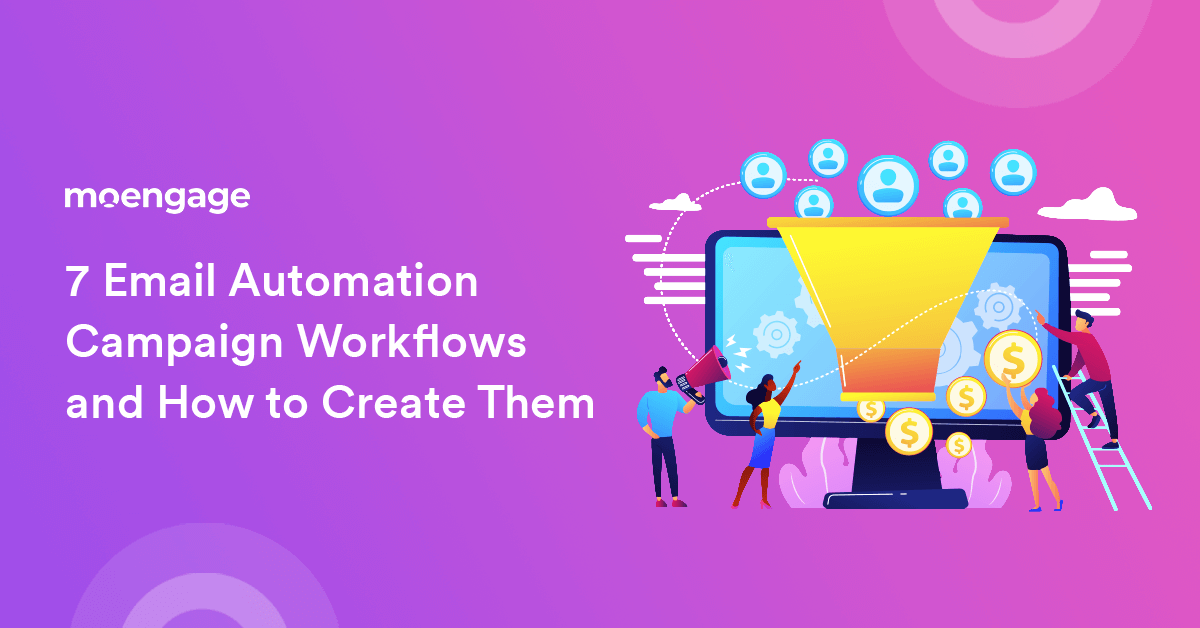
Email automation campaigns have become the bread and butter for ‘smart’ companies. After all, these campaigns are hyper-personalized, relevant, timely, and valuable for your customer base. On the business side, you must set up the email once and let the automation software take care of the rest. As soon as the customer meets the trigger you defined, the email will automatically be sent to them without your intervention.
The Learning: Email automation campaigns automate your entire marketing process from start to finish and make every marketer’s life convenient and more straightforward.
Now that you have a basic understanding of what an email automation campaign entails, let’s jump to the main meat of the article and look at seven email automation campaign workflows worth emulating and how you can create them.
1. Welcome Drip Campaign Workflow for Engaging with a New Subscriber
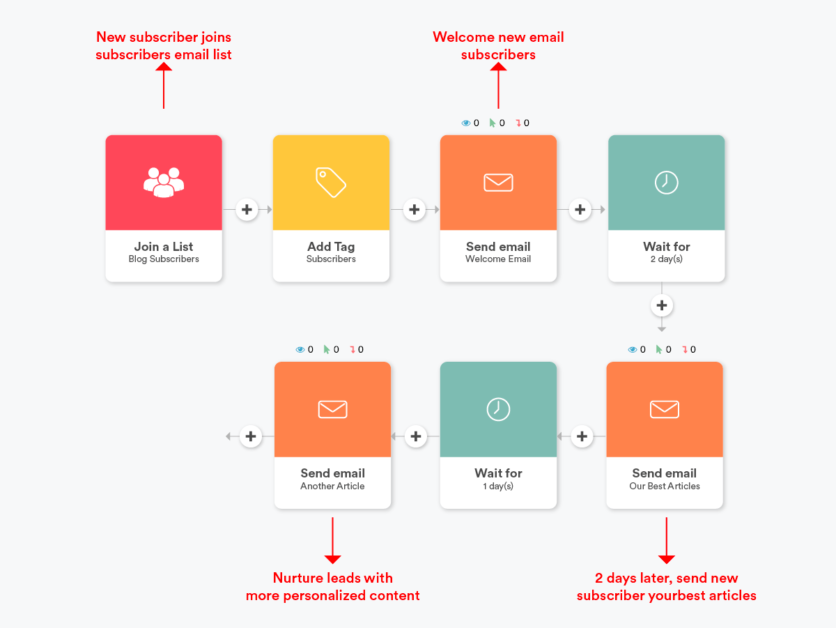 |
Primary Triggers: When the User Installs the App or When the User Creates an Account
When to Use It: When you want to:
- Welcome, acknowledge, and engage your new subscribers.
- Build curiosity and familiarize them with your offerings.
- Incentivize the purchase experience.
- Set the right expectations.
How to Use It: There are numerous ideas to embrace when using the welcome drip campaign. Keep reading:
Idea 1: You can write content that welcomes new subscribers and introduces your brand in a concise, engaging, and interactive manner, as Airbnb demonstrates below:

|
Remember that a behind-the-company sneak peek also works well.
| Pro Tip: You can also talk about your brand story, what makes your brand unique, why your customer should be excited about engaging with your brand, or what pain points your brand addresses from the customer’s perspective. |
Idea 2: You can also reel them in by offering a special subscriber-only offer that compels them to buy. To that end, you can include free eBooks, whitepapers, etc. Just send the coupon code/eBook in the follow-up email. Also, make sure your CTA stands out and redirects customers to the appropriate page. Take a look at Macy’s email below for inspiration:

|
Idea 3: This strategy entails discussing why your customer should look forward to future emails. So, reinforce your brand’s main USPs, such as relevant and helpful content, free videos, promo codes, etc. You’ll want to communicate how your subscriber can benefit from this new relationship. Take a look at Headspace’s email below, which uses a strong lead magnet — a free 10-day beginner course — to encourage customers to engage with the app:
 Image Source Image Source |
| Pro Tips:
1. Use at least 3-5 emails in your welcome drip campaign, with the breakup as follows
2. Analyze customers’ interaction with every email to see how you can optimize the content according to the subscriber’s preferences. 3. Send a thank you email towards the end of the campaign. |
2. Lead Nurturing Email Workflow to Maximize the Conversion Rate
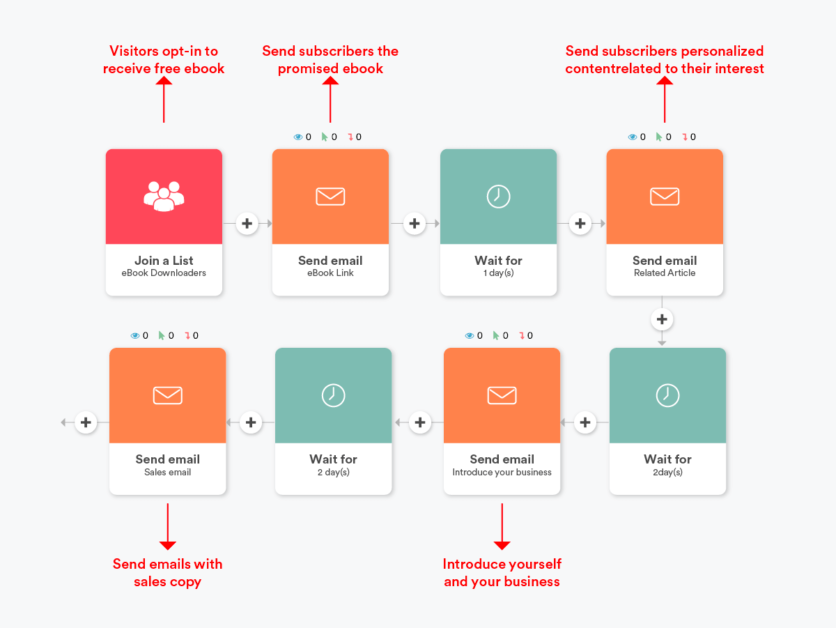
|
Primary Trigger: Top-of-the-Funnel Conversion Events (E.g., When the User Uses Your Product, such as playing the First Music Track” or Browses a Product Listing)
When to Use It: When you want to assist your customers through every stage of the sales cycle, with the end goal of driving a purchase.
How to Use It: Here are some tips to follow if you have a potential lead in your sights:
1. Send emails containing content such as customer success stories/case studies, free trial offers, or product demos to build their confidence and help advance the lead further down the conversion funnel.
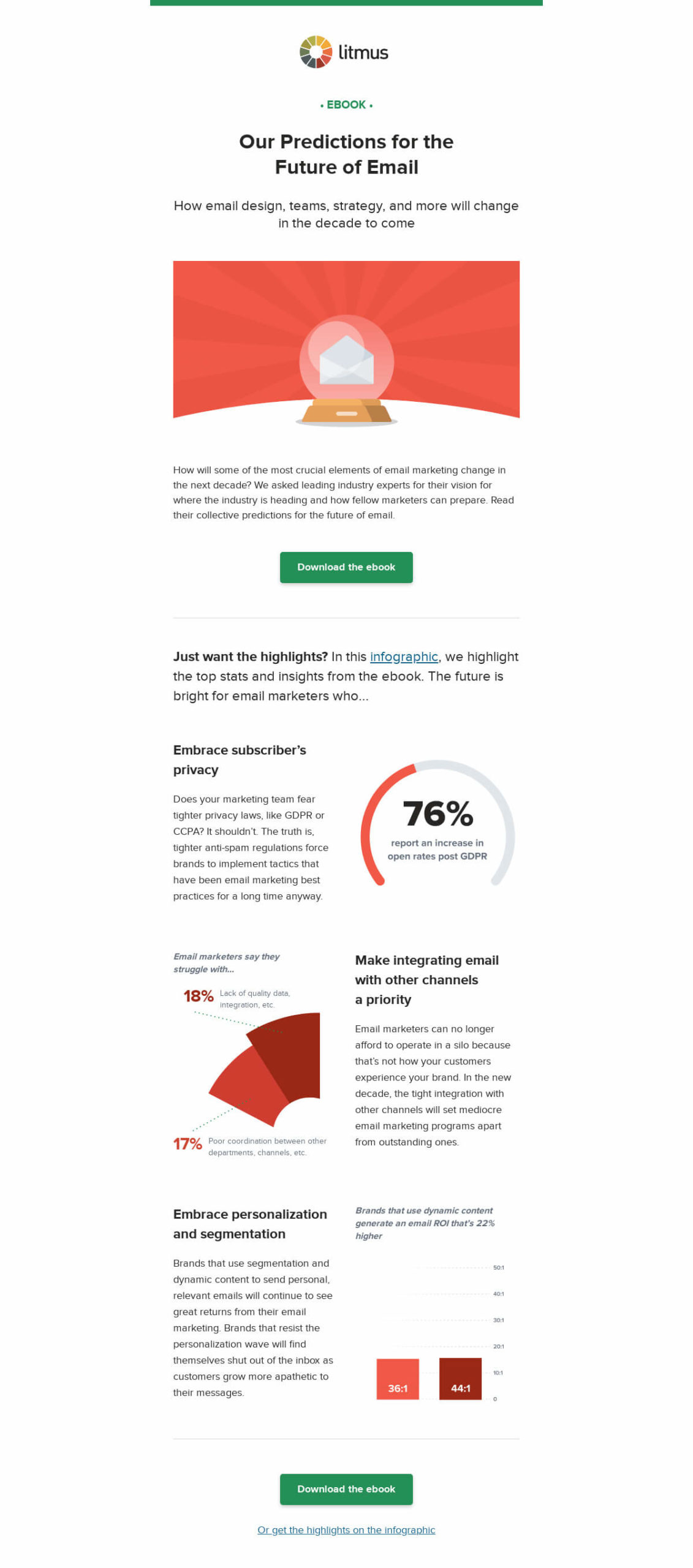 Image Source |
2. Consider adding additional resources instead of solely depending on deals and discounts. Also, instead of harping on your products/services, make the primary focus-prioritizing user-centric content. You can do this by personalizing the email, as Bulb demonstrates below:

|
3. Educate your leads about anything relevant to your product/audience’s motivations, pain points, needs, etc.
Here’s an example of a How-to email from Sephora:
 Image Source Image Source |
4. Allowing subscribers to get to know your brand by talking about your brand story, its purpose, core values, and so on.
5. Drafting real-life success stories related to your product/brand as this humanizes your brand.
 |
Pro Tip: Try using the “3/47/50” rule for lead nurturing, where:
|
3. Customer Happiness Workflow for Catering to Happy and Unhappy Customers
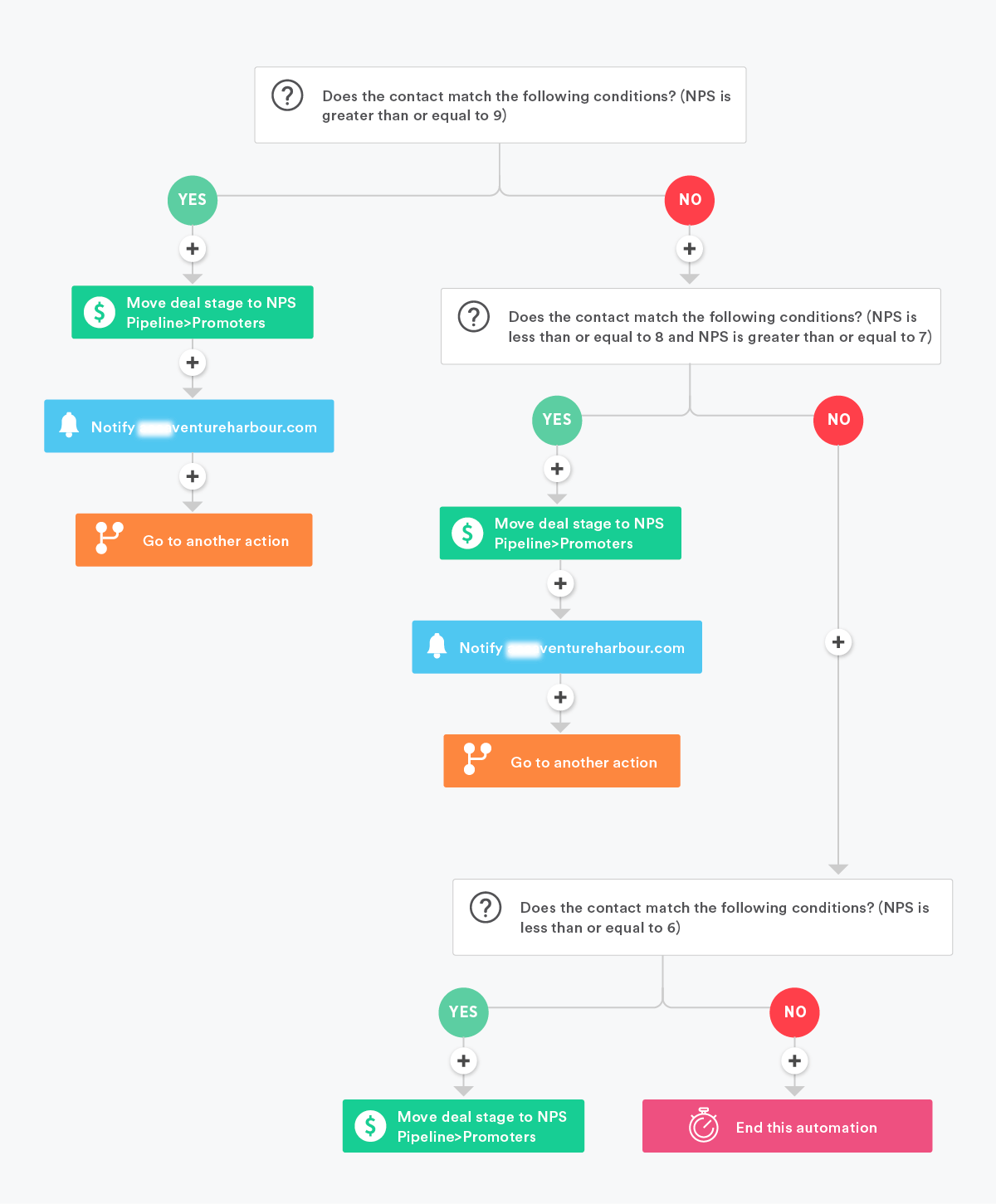 |
Primary Trigger: High or Low NPS Scores
When to Use It: If you regularly roll out Net Promoter surveys of your customer base.
How to Use It: You can use the Net Promoter Scores as a property to trigger the workflows. There are two ways to go about it:
A. For Happy Customers: Use the following flow for customers who have given a positive/high score on the NPS survey:
Step 1: Figure out your ideal customer happiness score.
Step 2: Use it as a benchmark for your dynamic list of happy customers.
Step 3: Trigger a workflow for customers with “happy” scores.
Step 4: Reward them with exclusive content, deals and offers, free gated content, etc., as Adidas does:

|
B. For Unhappy Customers: Use the same flow for customers with a negative/low score on the NPS survey, with a slight tweak in the process.
1. Focus more on offering free content downloads/deals/offers/demos etc., to improve customer happiness. You can also provide multiple solutions to address the issue and include preemptive answers to the customer’s FAQs for the problem. Warby Parker’s email to a customer whose lenses are blurry is the perfect example of how to tackle unhappy customers. Notice how the customer won’t need to ask clarifying follow-up questions as the following steps are already provided.

|
2. Make sure to segment your list of unhappy customers depending on why they are unhappy.
3. To address the root issue, try to deliver more targeted emails and personalized workflows.
4. Re-engagement Email Workflow for a Killer Win-Back Campaign
Primary Trigger: Inactive Contacts
When to Use It: When you want to bring back your inactive/lost contacts
How to Use It: Here are some tips to follow for a worthy win-back campaign if you wish to re-engage with inactive contacts organically:
- Set email automation triggers such as the length of time (say 30 days) since the contact last connected with your brand in any form–be it visiting your website, checking your email, buying something from you, and so on. Take a look at Disney’s re-engagement email:
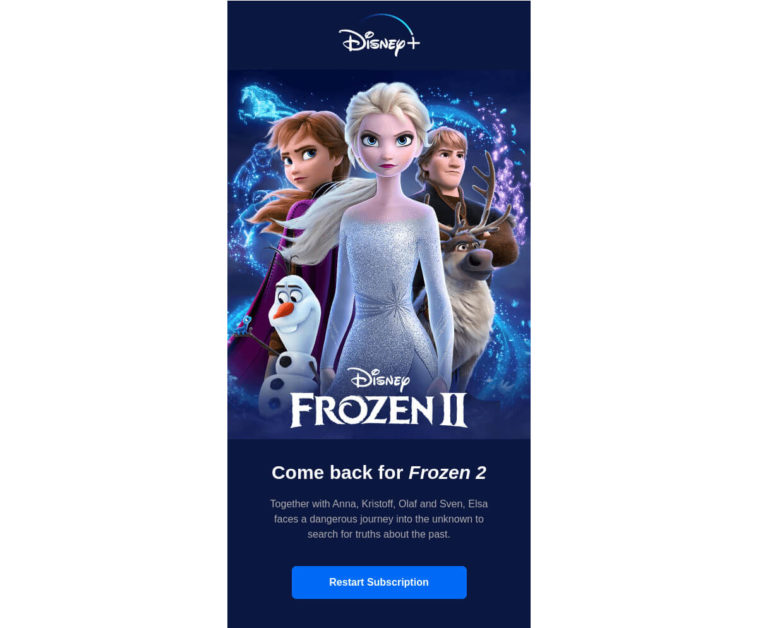
- Make sure to include an exclusive offer, a compelling coupon, or a reward to get your customer excited about your brand again, as Grammarly demonstrates below:
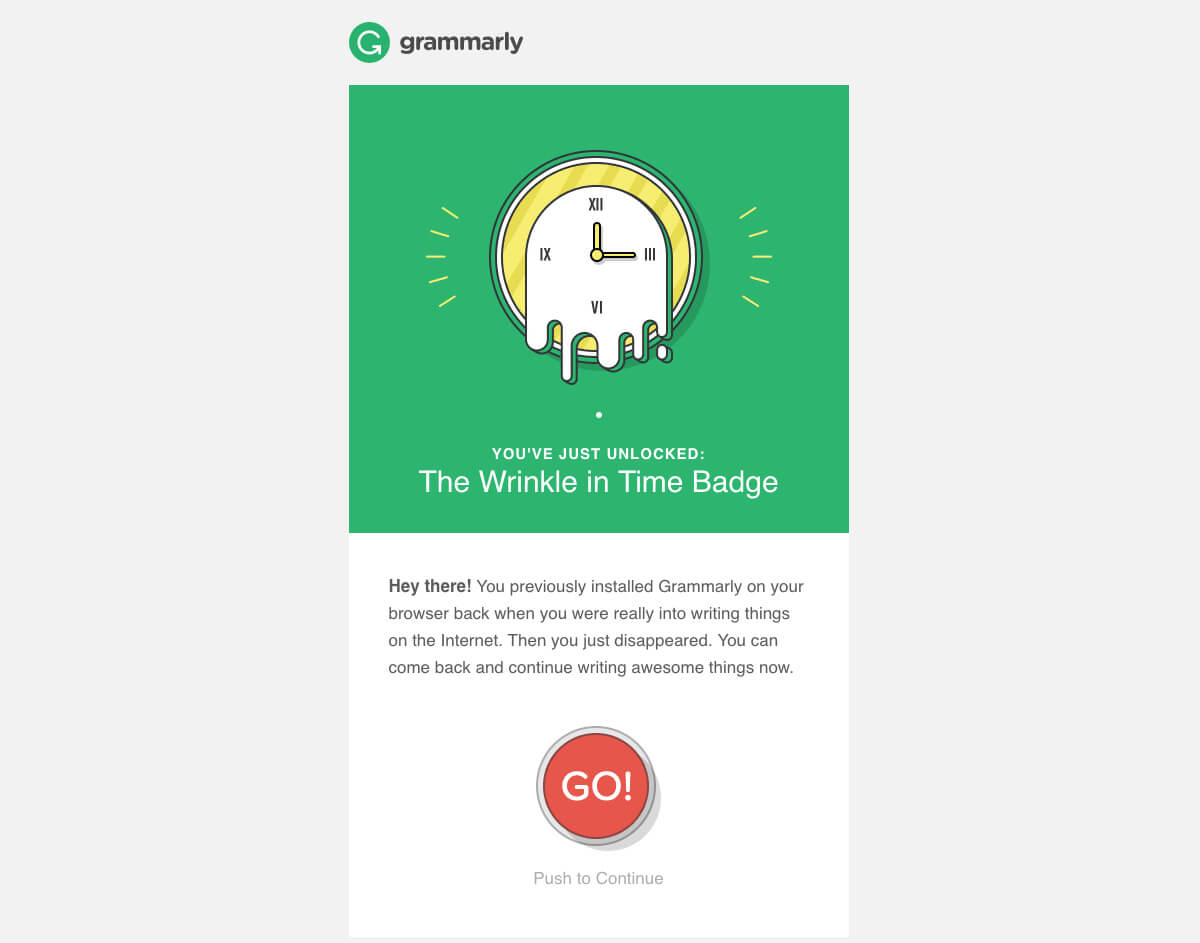
In terms of the process, here’s a quick outline for your reference:
Step 1: Start by sending a reminder email.
Step 2: Follow up with an irresistible offer.
Step 3: Inform subscribers about the next steps–whether you’ll be deleting or unsubscribing them:

|
Make sure to mention a time frame so that they don’t have the option of deferring it. You can also ask for the customer’s feedback as to what went wrong and use those insights to improve your offering. Here’s an example from WeddingWire for reference:
 |
Step 4: Unsubscribe customers if they haven’t responded, and inform them about the same.
| Bonus Material: Read this in-depth guide for more information on email engagement best practices. |
5. Relationship Building Workflows for Rewarding Your Loyal Customer Base
 |
Primary Trigger: Key Milestones/Occasions
When to Use It: When you want to reach out to customers on special occasions/milestones
How to Use It: If you wish to demonstrate your care and appreciation towards highly loyal and happy customers, you can use this workflow:
Step 1: Create a robust list of the holidays, special occasions, milestones, seasonal offers, etc., on which you would like to send out a mailer. You can include the brand’s milestones, such as a first anniversary, or special occasions relating to the customer, such as birthdays, anniversaries, etc. Take a look at Nike’s birthday emailer:
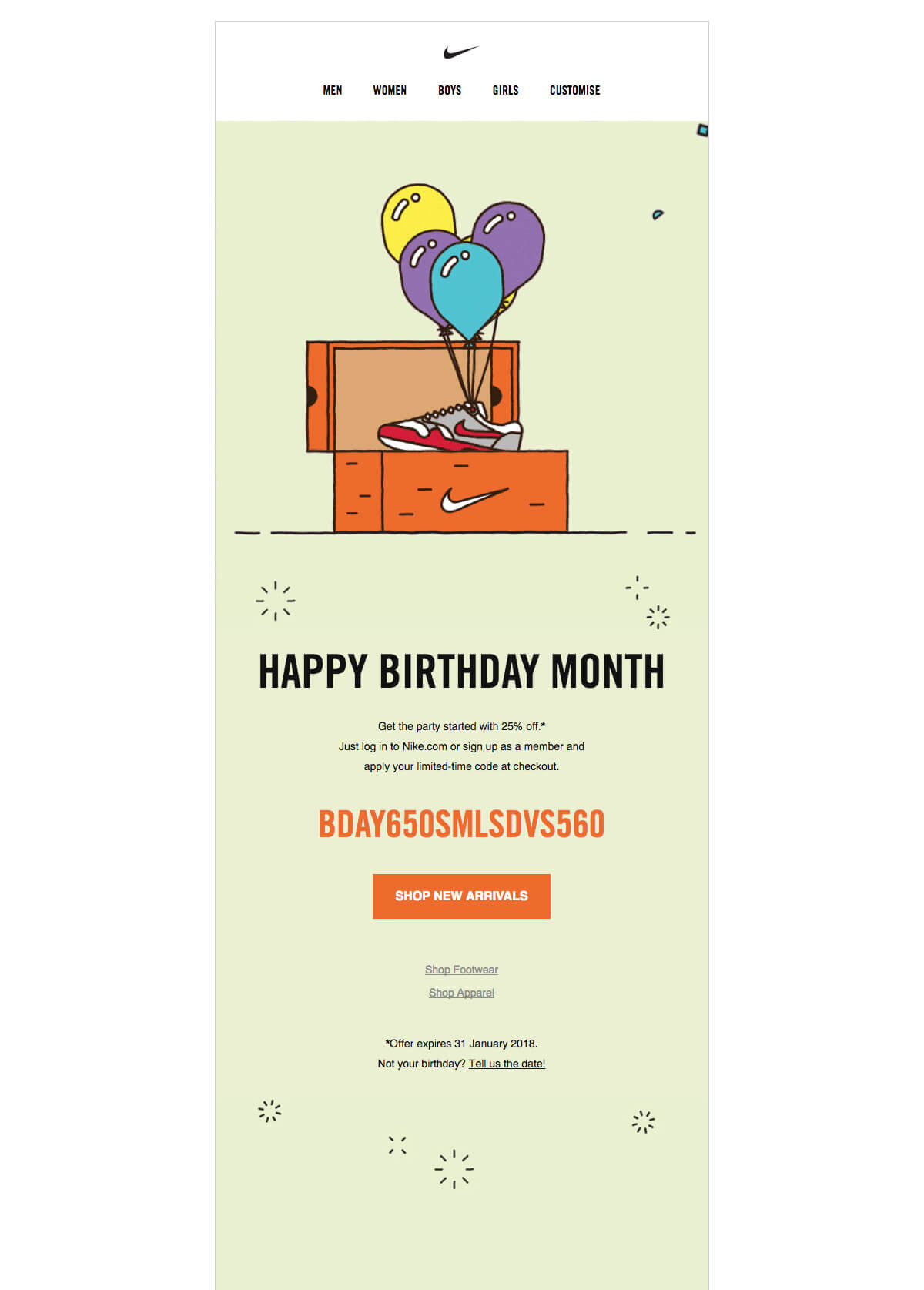 Image Source |
Step 2: Roll out customized and personalized content that you think your customer will be interested in and make them feel special, appreciated, and heard by the brand.
6. New Customer Workflow for Making an Impactful First-Impression
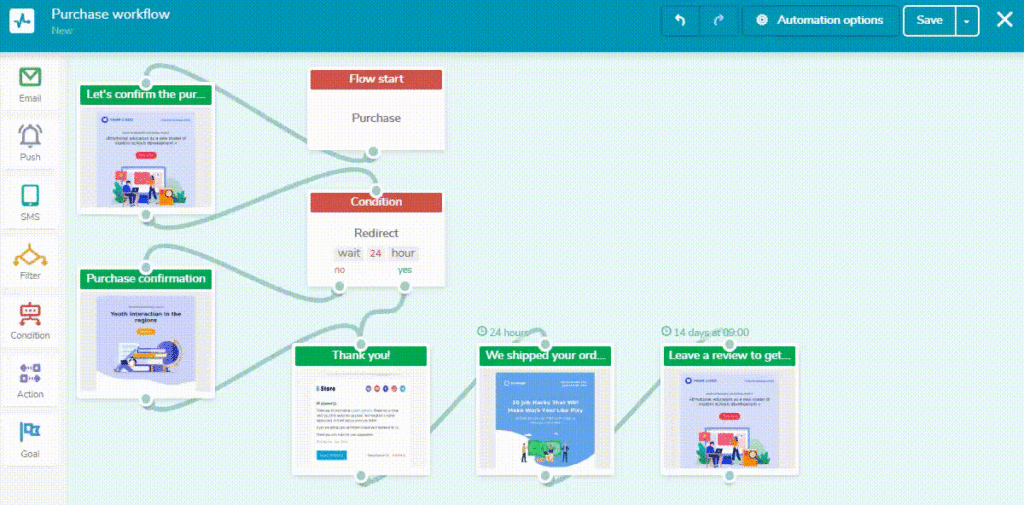 Image Source |
Primary Trigger: Lifecycle Stage
When to Use It: You’ll want to use this marketing flow when your customer’s lifecycle stage gets updated to “customer.”
How to Use It: There are numerous ways to leave an everlasting first impression on your new customer. Here’s a fool-proof process to help you get started:
Step 1: Send a “Welcome” email immediately once the customer makes a purchase. You can welcome them, give specifics concerning the order, such as delivery time, product details, tracking information, etc., and explain the next steps (if any) as Amazon does:

|
Step 2: Next comes the “Check-in” email, which you can send after three days of the welcome email. The idea is to ask your customers about what their experience has been like with the brand. You can also offer relevant contact points to allow the customer to connect easily with the brand.
Step 3: Then comes the “Product Delivery” email, which you should send on the day of the delivery to remind customers about their purchase and make it easier to track their delivery:

|
Step 4: Finally, you can send the “Product Review” email, which should be sent a week after the delivery. Encourage your customer to write an honest review and offer post-purchase support to ensure a stellar, proactive customer experience from start to finish. Here’s an example for reference:
 |
7. Engaged Customers’ Workflow for Boosting Revenue and Customer Loyalty
Primary Trigger: Website Visits, Social Media/Website Clicks, Form Submissions, etc.
When to Use It: When you want to offer a more personalized customer experience to already engaged customers
How to Use It: Here are some tried-and-tested hacks that work for an email automation workflow for engaged customers:
- Offer customized information and product suggestions to your customers that can solve their problems/pain points:
 |
- Laser focus on offers that are tailor-made to your customer’s interests as Netflix aces:
 Image Source Image Source |
Below, we’ve outlined a sample workflow for a customer who has just bought something from your website:
Step 1: Work on a “Check-in” email and send it two days post the purchase. Your primary emphasis areas for this kind of email could be: ensuring that the delivery went well, asking for product feedback, offering discounts for a future purchase, etc.
Step 2: Research and offer customers personalized recommendations after at least four days. As long as your email is highly personalized based on your customer’s preferences, you won’t need to include a promo code or a discount to reel them in.
| Pro Tip: You can analyze critical touchpoints, such as your customer’s browsing history, personal preferences, search history, etc., to offer relevant suggestions and perhaps even amp up your customer loyalty program. |
Wrapping Up
There are thousands of email automation campaign workflows that you can use to engage with new prospects, re-engage dormant customers, boost customer satisfaction, or celebrate your loyal customer base. There’s no “one-size-fits-all” strategy to swear by.
The permutation and combination for the email workflow you choose will ultimately depend on who your audience is and what your end goal entails. So save yourself valuable time and resources, experiment with the workflows mentioned above, and already invest in 360-degree email automation software.
Here’s What You Can Read Next |






